- Softcover: 664 Seiten
- Verlag: Springer US
- Autor: Arnel R. Hallauer
- Auflage: 1. Aufl., erschienen am 06.11.2012
- ISBN-10: 1-4614-2655-3
- ISBN-13: 978-1-4614-2655-4
- Größe und/oder Gewicht: 23,5 x 15,5 cm
Quantitative Genetics in Maize Breeding
Autoren: Arnel R. Hallauer234,33 €

HONIGHÄUSCHEN (BONN) – Maize is used in an endless list of products that are directly or indirectly related to human nutrition and food security. Maize is grown in producer farms, farmers depend on genetically improved cultivars, and maize breeders develop improved maize cultivars for farmers. Nikolai I. Vavilov defined plant breeding as plant evolution directed by man. Among crops, maize is one of the most successful examples for breeder-directed evolution. Maize is a cross-pollinated species with unique and separate male and female organs allowing techniques from both self and cross-pollinated crops to be utilized. As a consequence, a diverse set of breeding methods can be utilized for the development of various maize cultivar types for all economic conditions (e.g., improved populations, inbred lines, and their hybrids for different types of markets). Maize breeding is the science of maize cultivar development. Public investment in maize breeding from 1865 to 1996 was $3 billion (Crosbie et al., 2004) and the return on investment was $260 billion as a consequence of applied maize breeding, even without full understanding of the genetic basis of heterosis. The principles of quantitative genetics have been successfully applied by maize breeders worldwide to adapt and improve germplasm sources of cultivars for very simple traits (e.g. maize flowering) and very complex ones (e.g., grain yield). For instance, genomic efforts have isolated early-maturing genes and QTL for potential MAS but very simple and low cost phenotypic efforts have caused significant and fast genetic progress across genotypes moving elite tropical and late temperate maize northward with minimal investment. Quantitative genetics has allowed the integration of pre-breeding with cultivar development by characterizing populations genetically, adapting them to places never thought of (e.g., tropical to short-seasons), improving them by all sorts of intra- and inter-population recurrent selection methods, extracting lines with more probability of success, and exploiting inbreeding and heterosis. Quantitative genetics in maize breeding has improved the odds of developing outstanding maize cultivars from genetically broad based improved populations such as B73. The inbred-hybrid concept in maize was a public sector invention 100 years ago and it is still considered one of the greatest achievements in plant breeding. Maize hybrids grown by farmers today are still produced following this methodology and there is still no limit to genetic improvement when most genes are targeted in the breeding process. Heterotic effects are unique for each hybrid and exotic genetic materials (e.g., tropical, early maturing) carry useful alleles for complex traits not present in the B73 genome just sequenced while increasing the genetic diversity of U.S. hybrids. Breeding programs based on classical quantitative genetics and selection methods will be the basis for proving theoretical approaches on breeding plans based on molecular markers. Mating designs still offer large sample sizes when compared to QTL approaches and there is still a need to successful integration of these methods. There is a need to increase the genetic diversity of maize hybrids available in the market (e.g., there is a need to increase the number of early maturing testers in the northern U.S.). Public programs can still develop new and genetically diverse products not available in industry. However, public U.S. maize breeding programs have either been discontinued or are eroding because of decreasing state and federal funding toward basic science. Future significant genetic gains in maize are dependent on the incorporation of useful and unique genetic diversity not available in industry (e.g., NDSU EarlyGEM lines). The integration of pre-breeding methods with cultivar development should enhance future breeding efforts to maintain active public breeding programs not only adapting and improving genetically broad-based germplasm but also developing unique products and training the next generation of maize breeders producing research dissertations directly linked to breeding programs. This is especially important in areas where commercial hybrids are not locally bred. More than ever public and private institutions are encouraged to cooperate in order to share breeding rights, research goals, winter nurseries, managed stress environments, and latest technology for the benefit of producing the best possible hybrids for farmers with the least cost. We have the opportunity to link both classical and modern technology for the benefit of breeding in close cooperation with industry without the need for investing in academic labs and time (e.g., industry labs take a week vs months/years in academic labs for the same work). This volume, as part of the Handbook of Plant Breeding series, aims to increase awareness of the relative value and impact of maize breeding for food, feed, and fuel security. Without breeding programs continuously developing improved germplasm, no technology can develop improved cultivars. Quantitative Genetics in Maize Breeding presents principles and data that can be applied to maximize genetic improvement of germplasm and develop superior genotypes in different crops. The topics included should be of interest of graduate students and breeders conducting research not only on breeding and selection methods but also developing pure lines and hybrid cultivars in crop species. This volume is a unique and permanent contribution to breeders, geneticists, students, policy makers, and land-grant institutions still promoting quality research in applied plant breeding as opposed to promoting grant monies and indirect costs at any short-term cost. The book is dedicated to those who envision the development of the next generation of cultivars with less need of water and inputs, with better nutrition; and with higher percentages of exotic germplasm as well as those that pursue independent research goals before searching for funding. Scientists are encouraged to use all possible breeding methodologies available (e.g., transgenics, classical breeding, MAS, and all possible combinations could be used with specific sound long and short-term goals on mind) once germplasm is chosen making wise decisions with proven and scientifically sound technologies for assisting current breeding efforts depending on the particular trait under selection. Arnel R. Hallauer is C. F. Curtiss Distinguished Professor in Agriculture (Emeritus) at Iowa State University (ISU). Dr. Hallauer has led maize-breeding research for mid-season maturity at ISU since 1958. His work has had a worldwide impact on plant-breeding programs, industry, and students and was named a member of the National Academy of Sciences. Hallauer is a native of Kansas, USA. José B. Miranda Filho is full-professor in the Department of Genetics, Escola Superior de Agricultura Luiz de Queiroz – University of São Paulo located at Piracicaba, Brazil. His research interests have emphasized development of quantitative genetic theory and its application to maize breeding. Miranda Filho is native of Pirassununga, São Paulo, Brazil. M.J. Carena is professor of plant sciences at North Dakota State University (NDSU). Dr. Carena has led maize-breeding research for short-season maturity at NDSU since 1999. This program is currently one the of the few public U.S. programs left integrating pre-breeding with cultivar development and training in applied maize breeding. He teaches Quantitative Genetics and Crop Breeding Techniques at NDSU. Carena is a native of Buenos Aires, Argentina. http://www.ag.ndsu.nodak.edu/plantsci/faculty/Carena.htm
Über „Quantitative Genetics in Maize Breeding“
Das vorliegende Sachbuch zu Themen aus Umwelt und Natur „Quantitative Genetics in Maize Breeding“ wurde erarbeitet und verfasst von Arnel R. Hallauer. Dieses Sachbuch erschien am 06.11.2012 und wurde herausgegeben von Springer US.
Bücher wie „Quantitative Genetics in Maize Breeding“ sind im Onlineshop des Honighäuschens bestellbar. Online bestellte Fachbücher zur Imkerei und zu anderen Themen der Umwelt und des Artenschutzes sind zu den üblichen Öffnungszeiten auch direkt im Buchladen Bundesamt für magische Wesen in Bonn, der Stauhauptstadt von Nordrhein-Westfalen abholbar und werden auf Wunsch verschickt.
Das Thema Bienensterben, Rückgang von Insekten und allgemeines Artensterben ist in aller Munde und das Honighäuschen als frühere Bioland Imkerei hat sich von Anfang an daran beteiligt. Mehr als 35 Jahre Imkereierfahrung nahmen ihren Anfang 1982 mit den ersten eigenen Bienen.
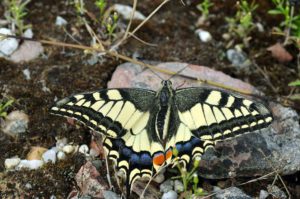
Der zehnjährige Junge, der 1977 einem Hamburger Imker über die Schulter schaute; der Fünfzehnjährige, der mit der Imkerei in Zeiten begann, in denen es noch keine Varroamilbe gab; der achtzehnjährige Fahrschüler, der lernte, dass man die Windschutzsscheibe seines Autos nach einer längeren Fahrt von Insekten säubern muß; der zwanzigjährige Student, der für seine Bienen einen Platz in Bonn suchte; der dreißigjährige Berufsimker, der seinen Bienen quasi eine Gutenachtgeschichte erzählte und sich den Kopf zerbrach, wie man die Umwelt mit ihren Bienen, Wespen, Schmetterlingen und andere blütenbesuchenden Insekten vor den Machenschaften der Agrargiftindustrie und der Gleichgültigkeit agrarindustriehöriger Politiker schützt; der Imker, der nicht nur auf dem Weihnachtsmarkt Bonn die Öffentlichkeit suchte, um bei Führungen an den Bienen auf dem Dach der Bundeskunsthalle zu erleben, dass Kinder (und deren Helikoptermuttis!) Angst vor Schmetterlingen hatten, bis hin zum Begleiter von Forschungsprojekten zu den Riesenhonigbienen Nepals oder den Killerbienen Afrikas, stellt fest, dass etwas sehr im Argen liegt in unserem Umgang mit der Umwelt.
Es sollte jedem bewußt sein, dass die Haltung „Natur ja, aber bitte woanders!“ nicht in Ordnung ist.
Die wunderschöne Welt der Natur
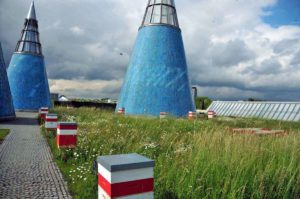
In unserem Online-Buchshop finden Sie viele Bücher wie „Quantitative Genetics in Maize Breeding“, die Ihnen die fantastische Welt der Bienen, Wespen, Ameisen, Hornissen und Schmetterlinge sowie anderer Insekten näherbringen.
Aber nach wie vor stehe ich Ihnen auch gern zu einem Gespräch oder zu einer Beratung im Umgang mit Bienen, Wespen, Hornisse, Wildbienen und Hummeln zur Verfügung, wenn Sie Fragen haben. Besuchen Sie uns in Bonn im Bundesamt für magische Wesen.
Und natürlich gibt es auch weiterhin Honig, Bienenwachskerzen und Met bei uns und zwar das ganze Jahr – nicht nur zu Weihnachten.
| Gewicht | 1027 g |
|---|---|
| Größe | 23,5 × 15,5 cm |
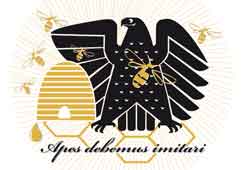

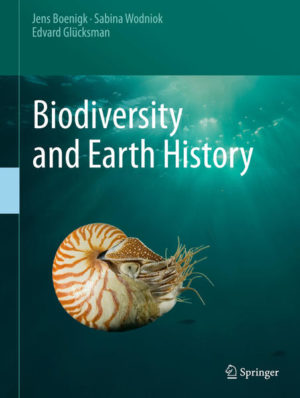
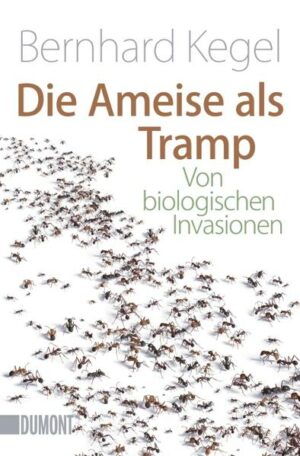
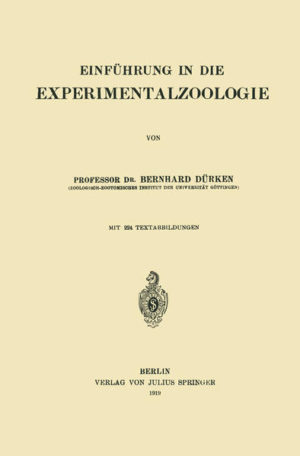
Bewertungen
There are no reviews yet